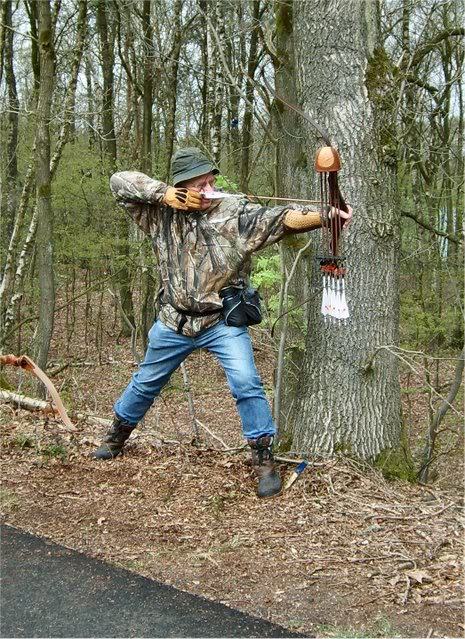Don't shoot the animal, hunter!
 A sportsman's chance of shooting an animal at a distance
R
(
>
A
)
is
R
2
A
2
.
He fires when
R
=
2
A
and if he misses, he reloads and fires when
R
=
3
A
,
4
A
,
5
A
⋯
and so on. If he misses at distance
1
7
2
9
A
,
the animals escapes.
A sportsman's chance of shooting an animal at a distance
R
(
>
A
)
is
R
2
A
2
.
He fires when
R
=
2
A
and if he misses, he reloads and fires when
R
=
3
A
,
4
A
,
5
A
⋯
and so on. If he misses at distance
1
7
2
9
A
,
the animals escapes.
If the probability that the animal escapes is b a where a and b are coprime integers, what is the value of b − a ?
You can try my other Probability problems by clicking here
The answer is 864.
This section requires Javascript.
You are seeing this because something didn't load right. We suggest you, (a) try
refreshing the page, (b) enabling javascript if it is disabled on your browser and,
finally, (c)
loading the
non-javascript version of this page
. We're sorry about the hassle.
2 solutions
That's The Cool Problem ... Thumbs up For Problem Setter..!!
Absolutely ! its the smart way. :)
Log in to reply
Thanks. I like how you brought the Hardy-Ramanujan number into the question. :) It's interesting that even if the hunter keeps shooting at successively greater distances forever the probability that the animal escapes never goes below 50%, and only approaches this value in the limit.
Log in to reply
I love 1729, that's why I try to bring it everywhere. You know my email id is "[email protected]" .
Why is the problem tagged with #IITJEE?
Log in to reply
Because it will be helpful for those who are preparing for entrance into IIT or any other engineering college. Is there something wrong with it ?
I didn't get it directly in the way you've got it, but I got it like this too -
(4-1)(9-1)(16-1)....(1729^2)/4x9x16x25...x1729^2
Using (a+b)(a-b) = a^2 - b^2, we can simplify the numerator, getting 1730/(1729*2)
Exactly Same Way.
I got the same expression but i am confused of solving the telescoping series. Getting a few terms extra. please help. Thanks :)
Log in to reply
Expanding the product out four terms from n = 2 to n = 5 gives us
2 ∗ 2 1 ∗ 3 × 3 ∗ 3 2 ∗ 4 × 4 ∗ 4 3 ∗ 5 × 5 ∗ 5 4 ∗ 6 = 2 1 × 5 6 ,
since all the factors in the "middle" successively cancel out pairwise. So if we keep expanding the product out to n = 1 7 2 9 we end up with 2 1 × 1 7 2 9 1 7 2 9 + 1 = 2 1 × 1 7 2 9 1 7 3 0 .
good problem,becomes simple once some one sees it as a telescopic series,, but what would have made this problem really easy was if the hunter had infinite chances to hunt the deer,., in that case ,, the probability would have been (1/2) and the answer 1
Yeah, Even this value tends to 0.5
The animal escapes if the hunter misses at every distance from 2 A to 1 7 2 9 A . The probability that this happens is
n = 2 ∏ 1 7 2 9 ( 1 − ( n A ) 2 A 2 ) = n = 2 ∏ 1 7 2 9 ( 1 − n 2 1 ) = n = 2 ∏ 1 7 2 9 n ∗ n ( n − 1 ) ( n + 1 ) .
Now this a telescoping product, since if we write all the successive terms in this fashion we end up canceling all the middle terms and end up with an answer of just
( 2 1 ) ( 1 7 2 9 1 7 3 0 ) = 1 7 2 9 8 6 5 .
This means that a = 8 6 5 , b = 1 7 2 9 and b − a = 8 6 4 .
(To demonstrate how the telescoping works, I'll write out the product from n = 2 to n = 5 :
( 2 ∗ 2 1 ∗ 3 ) ( 3 ∗ 3 2 ∗ 4 ) ( 4 ∗ 4 3 ∗ 5 ) ( 5 ∗ 5 4 ∗ 6 ) = ( 2 1 ) ( 5 6 ) .)